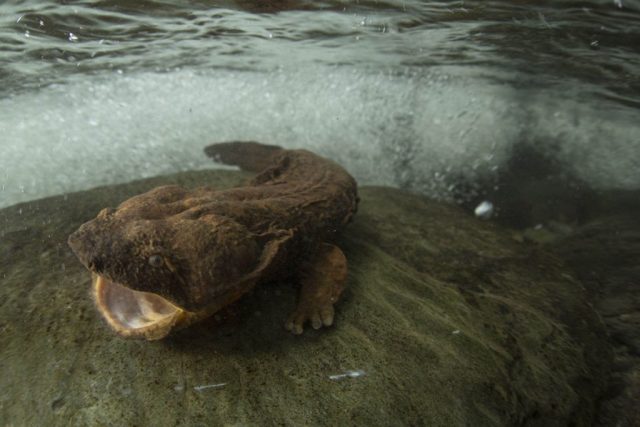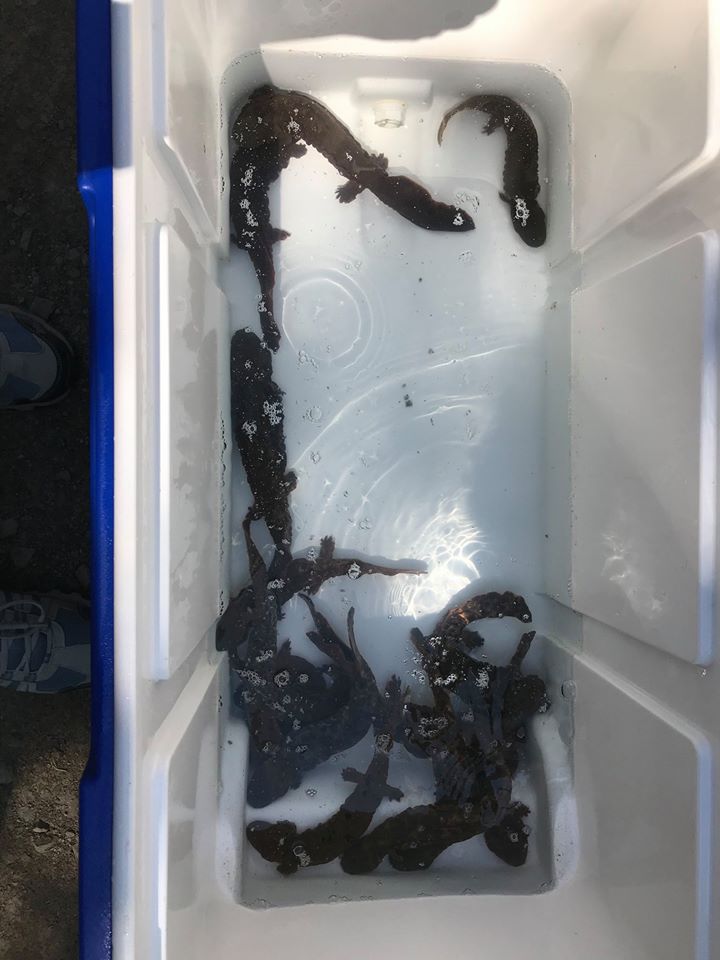
Ohio – Scientists, Natural game wardens, and Zoos have been working for years for the day that they can report success in the attempt to re-integration of hellbenders in Ohio.
When you think of a salamander you think small cute and about 6 inches in length, that not the case with this robust water dweller rare to Ohio that scientists are trying to help make a comeback.
The Eastern HellBender native to Ohio, is a salamander like mentioned above but average gets around a foot to foot and a half long, and is known to get up to two feet long! Hellbenders unlike other salamanders are completely aquatic and live in only really clean water. So finding one in a high-flowing stream is actually a really good thing. The Hellbender feeds on insects, worms, minnows, and crayfish.
Sadly this amazing creature is listed as endangered in Ohio and that is why Ohio Natural Resources is working to reestablish this creature into our streams to attempt a comeback for the salamander. For the past ten years and the release of 1,900 three-year-old captive-bred animals from both the Columbus and Toledo Zoo, successful reproduction in the wild has been documented.
According to a release from the Ohio Division of Wildlife Hellbenders from a release in 2016 were discovered with eggs in southeast Ohio watersheds. This is a huge milestone in our efforts to recover this endangered amphibian.
Hellbenders breed in late August or September. The female lays up to 500 eggs in a nest the male excavates under a large flat rock. Sometimes several females use the same nest. Hellbenders differ from other salamanders in that the male does not fertilize the eggs until after they have been laid. Young hellbenders hatch in two to three months and retain their gills until they are about 1 1/2 years old. The Hellbender can live up to 60 years in the wild.












